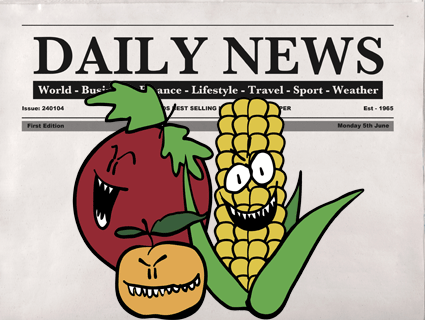
<p><a href="http://www.shutterstock.com/cat.mhtml?lang=en&search_source=search_form&search_tracking_id=Rqc-XRWAIbEJ0wQtHKGQ_Q&version=llv1&anyorall=all&safesearch=1&searchterm=brocolli&search_group=&orient=&search_cat=&searchtermx=&photographer_name=&people_gender=&people_age=&people_ethnicity=&people_number=&commercial_ok=&color=&show_color_wheel=1#id=21480010&src=NT_WEw8cRtMyAdfIxaDTZA-4-84" target="_blank">Matthew Cole</a>/Shutterstock</p>
This is the rare post about a plant-breeding project involving GMO seed giant Monsanto wherein I come to praise the effort, not bury it in scorn.
First, a bit of background. Broccoli is a fantastic thing to eat—even President Obama thinks so. It delivers compounds that seem to fight cancer and help maintain your immune system, among other benefits. It also tastes really, really good when it’s fresh and in season. (Here’s my simple recipe for roasted broccoli with garlic and chili pepper.)
And herein lies the rub. Broccoli plants grow well enough in warm weather, but they won’t flower, meaning no delicious broccoli heads during a hot summer. And for that reason, most of the broccoli consumed in the United States—94 percent of it, in fact—is grown in the foggy zones of California. For people in the eastern half of the country, that means you can generally find fresh, locally grown broccoli only when the weather has cooled in the fall. The rest of the year, the stuff tends to be a bit worse for the wear when it reaches the table after the long haul from California. You know this stuff: limp, bland, vaguely sulfury, kind of gross. Hence, I think, broccoli’s tenacious reputation as a good-for-you vegetable that sort of sucks.
As Michael Moss reports in a recent New York Times piece, a group of plant breeders from land-grant universities—including Cornell, the University of Maine, and the University of Tennessee—are looking to extend broccoli’s growing season. Using conventional breeding (i.e., not genetic modification), they’ve created a breakthrough broccoli strain that can “thrive in hot, steamy summers like those in New York, South Carolina or Iowa,” while also delivering heads that are “crisp, subtly sweet and utterly tender when eaten fresh-picked,” Moss reports.
The initiative—facilitated by a $3.2 million grant from the US Department of Agriculture and called the Eastern Broccoli Project—strikes me as a proper use of public plant-breeding funds. Its goals seem impeccable: to increase the supply and appeal of a nutrient-dense vegetable in a way that cuts down on cross-country shipping and boosts local food economies. Too often, plant breeding is geared narrowly to the interests of the seed industry’s shareholders—such as crops genetically engineered to resist the very herbicides sold by the companies themselves. It’s great to see a breeding project geared to actual public interests, one that could transform the way a high-profile vegetable is grown and consumed over a large swath of the country. I can’t think of another public seed-breeding project quite like it.
But there’s a catch. As Moss reports, two gigantic agribusiness firms, Monsanto and its Swiss rival Syngenta, are partners in the project. They’re most known for their GMO corn and soy, as well as pesticides, but Monsanto and Syngenta are also the globe’s two biggest vegetable seed purveyors—and, according the the USDA, they and two other firms together control 70 percent of the entire global trade in vegetable seeds.
With giants like these barreling in, I wondered whether this benevolent-sounding broccoli project might turn into the wholly owned property of these firms. My concern would be market domination. There’s a budding scene of small, regionally oriented seed companies in the United States, and I’d hate to see them cut off from a promising, publicly developed broccoli strain. I’d also hate to see the financial benefits of a publicly funded breeding program get completely siphoned off by these ginormous, market-dominating firms.
So I called Thomas Bjorkman, the Cornell plant scientist who’s spearheading the project, to ask him about just that. Bjorkman explained that in addition to the biotech giants, partners include relatively small players like Maine-based Johnny’s Selected Seeds, a purveyor widely used by small- and mid-size farmers across the eastern United States.
The way it works, Bjorkman explained, is that the Eastern Broccoli Project itself owns the breakthrough seed stock; the private partners like Monsanto and Johnny’s license it and cross it with their own broccoli varieties to create proprietary hybrids. “Our goal is to get seeds of better-adapted broccoli varieties out to Eastern growers so that they can grow more local broccoli,” he told me. And working with private players with established distribution networks is the fastest way to do that, he added.
In addition to the partnerships with Monsanto and Johnny’s and the like, the group also plans to place open-pollinated versions of the new broccoli on the public domain—meaning that smaller seed purveyors will be able to develop and market their own strains. Monsanto and Syngenta are obviously participating because they hope to benefit from an emerging market in summer broccoli for Eastern growers, but Bjorkman convinced me that Eastern farmers who want access to the new summer-friendly broccoli traits will be able to get them without having to deal with a big biotech company if they’d prefer not to.
I asked him about the specter of genetic modification—would it be a tool his team would consider using as it refines its broccoli strains? He told me “no,” for two reasons. The first involves consumer demand. “No one wants transgenic [GMO] broccoli, as far as I can tell,” Bjorkman said. The second reason is even more fundamental, related to a little-discussed limitation of GM technology that I’ve written about before (see my 2012 piece on Monsanto’s so-so “drought-tolerant” GMO corn): It ends up being not very good at overhauling complex processes, like how heat affects a plant’s ability to flower. There’s no one single gene that governs how, say, broccoli behaves under hot conditions, Bjorkman told me. And so GM technology “isn’t a promising avenue for what we’re doing.”
















